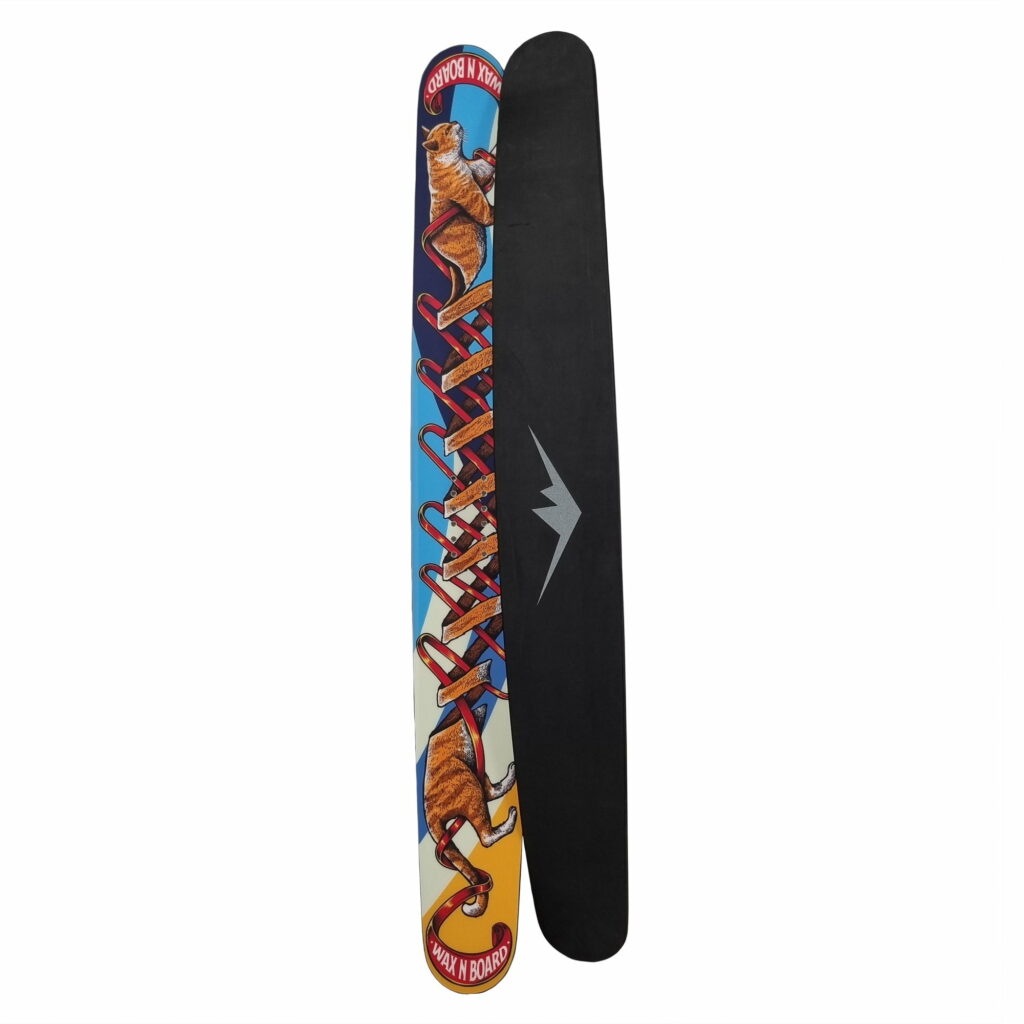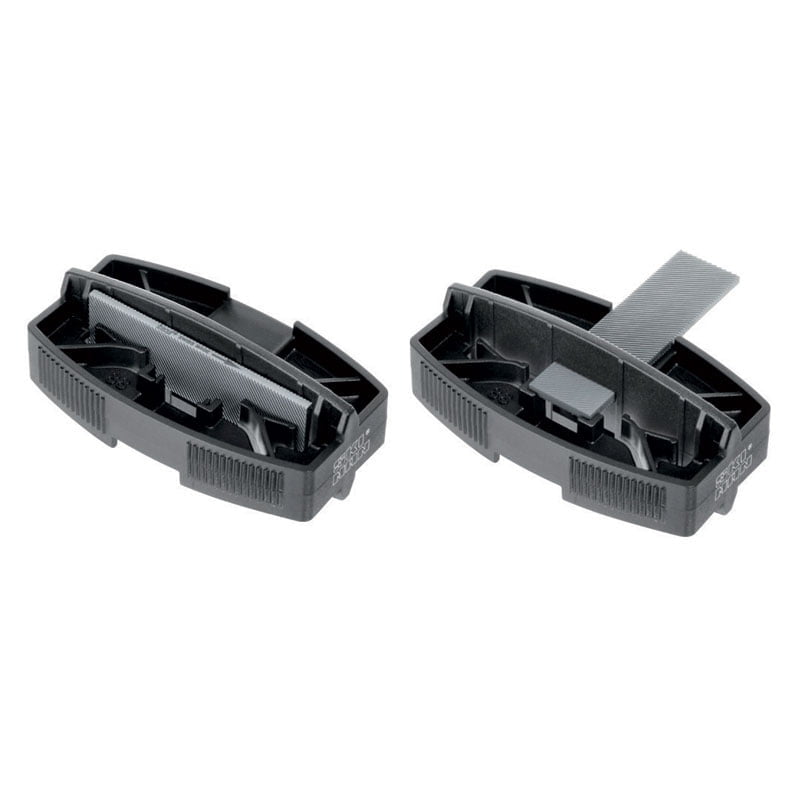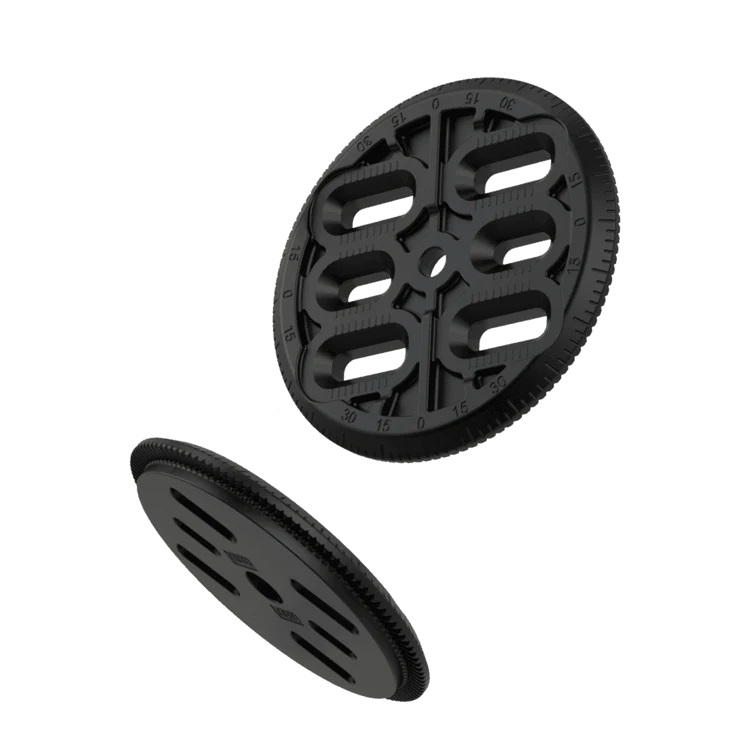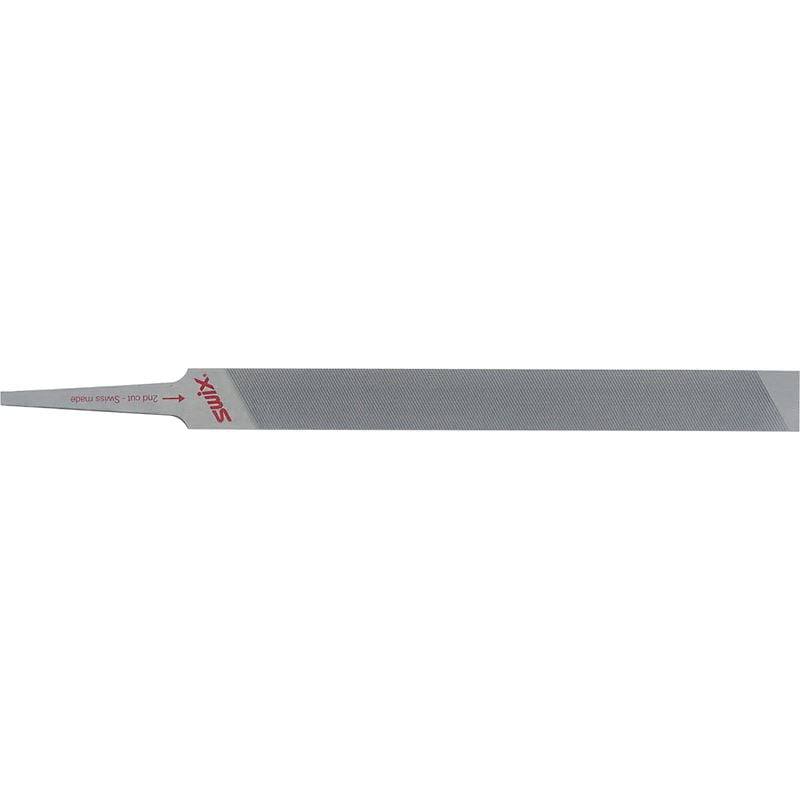Bee Wax & Board we use different wax brushes for our premium Ski & Snowboard maintenance visits. We do this because every step, but also every job, requires a different approach.
However, we note that these brushes are an often misunderstood and misused tool. For example, we see many skiers who wax their skis themselves, but only purchase 1 brush for the entire maintenance. People almost always take the cheapest brush “because it does the job”. Nothing could be further from the truth; There is indeed a difference in a more expensive brush, but also between the materials used. Consider copper, nylon or horsehair, for example.
Do you want to wax your Skis or Snowboard yourself? Then read on before you purchase your new wax brushes from us shop.
In this article:
- Brush shape
- Double function
- Brush material
- Pre Wax & Post Wax
- Metal brushes
- Nylon brushes
- Natural fibers
- Roto brush
- Fiber Tex
- Cork
- Finally
Form wax brushes

The first thing you may notice is that there are different shapes on the market. You have small brushes, large brushes, but also rectangular, oval and even round brushes! There are two reasons for these different sizes and shapes. For example, a small brush is cheaper than the larger version, where the manufacturer has to produce much more material and therefore gives a more expensive price. On the other hand, a larger brush works faster than the small version, the large brush covers more surface area, which makes working more efficient.
The specific shape is important for ergonomics. For example, the oval brush will fit better in your hand than a rectangular version. In addition, the oval brushes are usually equipped with a strap that allows the brush to hang on your hand. That is something very simple, but super useful as soon as you want to start the next movement. We can only recommend this one!
Double function
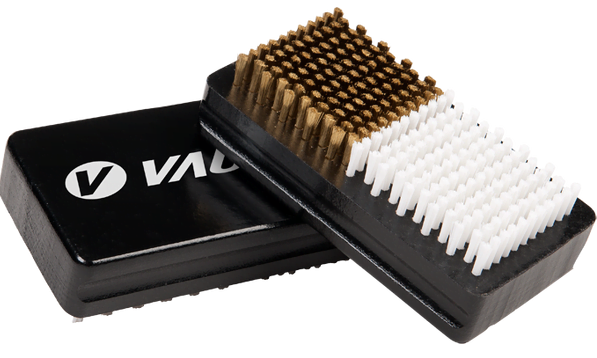
There are some manufacturers on the market who sell Ski wax brushes with a dual function. The most common variant is a 50/50. Half of such a brush consists, for example, of a nylon brush, and the other half, for example, of a copper brush. In addition, there are models with a narrow outer edge made of a different material, but also types where the material is criss-crossed.
Personally, we do not recommend these brushes. These are mainly a marketing pitch. Research shows that people who want to wax their Ski or Snowboard themselves often make a budgetary choice. These double brushes seem to suggest that with 1 (cheaper) purchase you actually have 2 brushes. Don't be fooled: you can only wax properly with brushes with one specific function. In addition, these brushes do not wear out quickly and it is better to see it as a longer-term investment to purchase the correct set. Not convinced yet? Then read on to find out why!
Brush material

The most important property of a Ski & Snowboard wax brush is the bristles. The bristles come in different thicknesses and also with different stiffness. These two properties determine what you should use the brush for. A large diameter (thickness) is better suited to removing heavy dirt and old wax. This also covers a larger surface area, allowing you to clean faster. A small diameter is intended for finishing, namely polishing and removing small excess wax residues.
The stiffness is comparable; the stiffer the more suitable for removing dirt from your ski or snowboard base. And the softer the better suited for polishing.
Brushes can be found in 3 categories;
- hard,
- medium &
- soft.
If your budget does not allow it, we recommend purchasing a medium brush. However, if your budget allows it, it is better to immediately buy all three of these categories, only then will you be able to buy your own skis Good to wax.
Pre Wax & Post Wax
We have already referred to cleaning but also polishing a few times. Cleaning obviously falls under Pre-wax, and polishing under Post wax. The purpose of Pre-wax tools is to remove contamination, open up your Ski or Snowboard pores, but even more: add structure to your base. Do not underestimate Pre-waxing, only by removing imperfections such as oxidation, contaminated wax, etc. can you get an optimal end result. I don't think we should explain that applying wax to a bad surface is as good or bad as not waxing?
After waxing the Post Wax process starts, the goal here is to remove all excess wax because in fact you only want to refill the pores in your Ski or Snowboard with clean wax. Too much wax slows down your sliding performance; This will form a barrier so that water (snow) cannot drain smoothly. Before you start brushing, scrape away any excess wax. Once you're done with that, take a clean brush to polish. Tip, absolutely do not use your Post Wax brushes for this because then you will smear back all the dirt you previously removed!
Metal brushes
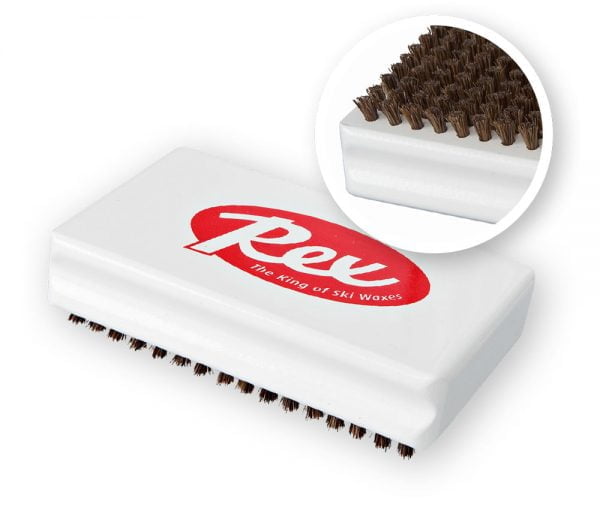
There are three types of metal Ski & Snowboard wax brushes to help you wax your Ski or Snowboard yourself. That is: copper, bronze and steel.
These three materials are extremely suitable for cleaning the base and restoring the structure during the Pre-Wax process. The purpose of these brushes is to generate a surface that can absorb wax better and therefore slide better.
The best tool to remove contamination is steel, this brush is quite expensive, but stands head and shoulders above copper brushes and bronze brushes. On the other hand, a brush made of copper or bronze is more universal, they are more difficult to remove oxidation, they are also softer in texture, making them also suitable as a first Post Wax brush. Something for which it is of course better not to use a steel brush.
Tip from Wax & Board! As we already indicated, it is better not to reuse a Pre-Wax brush in the Post Wax process. If you do not have the budget to purchase both a steel brush and a copper brush, it is best to consider 2 copper brushes. Isn't that also an option? Then consider a dry cleaning product to clean your copper brush between steps.
Nylon brushes
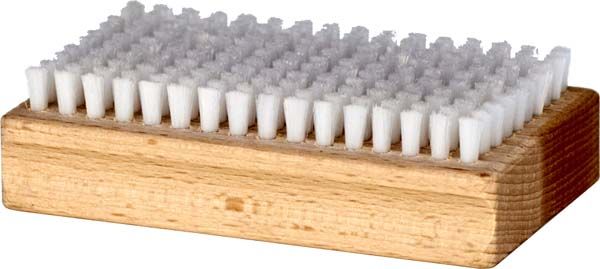
Almost everyone knows a Nylon brush. You only use this type of Ski & Snowboard wax brush in the Post Wax process, following the bronze or copper brush. If you are going to wax your Ski or Snowboard yourself, you should note that there are also 3 categories here; hard, medium & soft. Fortunately, there is an agreement in the wax industry;
- Black nylon brush is hard,
- White nylon brush is medium,
- Blue nylon brush is soft.
The hair bristles of the black and white nylon brushes are often thicker in structure than, for example, a medium bronze ski wax brush. This makes them useful as an alternative to cleaning, although you will have to brush more often to achieve a similar result.
Tip from Wax & Board! If you would like to use a nylon brush as a cleaning brush, buy hydrocarbon wax or organic wax. You will not be able to clean the top of line and harder types of wax with this.
The white medium Ski & Snowboard wax brush is something everyone should have in their range if you want to wax yourself. However, we also advise you to purchase the softer blue nylon brushes, which are extremely useful as a third brush in the Post wax process –so after copper & standard nylon– because the fine texture can penetrate deep into the ski base, to remove excess wax without changing the structure you just applied.
Natural fibers
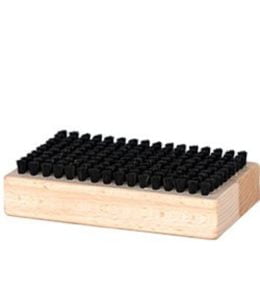
Natural fiber brushes are a must when using wax with Fluorine. If you do not have such a brush, it is better not to buy wax with Fluorine. We also wrote about it in the article about the different types of wax; you have to be careful not to have an overload of Fluorine. If you are going to use Fluor, you do not want to contaminate all your brushes with this product. It is therefore best to purchase a brush for use with Fluorine, and one for use without Fluorine.
If you have decided to purchase Fluorine, you should also immediately purchase a brush with pig or boar bristles. These stiffer long hairs are ideal for finishing your Fluorine wax.
For all other waxes, use a brush made of horsehair as a finishing brush. These horsehair brushes are even softer to use than the softest blue nylon brush and therefore ensure perfect drainage while skiing or boarding.
Roto brush
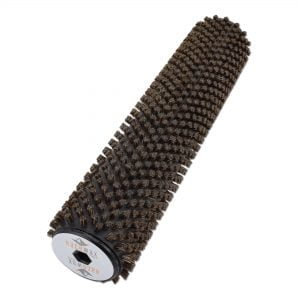
So far we have mainly looked at the materials of a Ski & Snowboard wax brush, but did you know that there is also an efficient tool? If you wax weekly, you may consider purchasing a Roto-brush. You mount this tool on your drill, so you need less muscle power to brush. These brushes are available in nylon, metal or natural fibers. And of course also in hard, medium or soft variants. If you are considering this tool, it is best to open your wallet immediately because they are expensive! This is of course due to the many bristles that must be mounted during manufacture.
However, there is more than 1 disadvantage. The rotating brushes spread tiny wax particles into the air, which is toxic to your health, so invest in at least a half-face mask. Personally, we recommend a full face mask so that you cannot inhale it but also cannot get it in your eyes.
In addition, a cordless drill does not have enough power to rotate these brushes, so it is better to use a wired screwdriver, and note that we wrote power! Running it at high speeds is absolutely not allowed, because you will damage your ski or snowboard base.
Fiber Tex
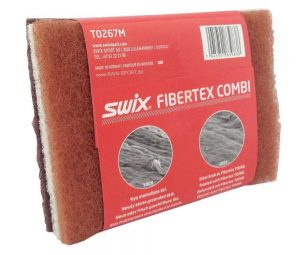
Compare it with the scouring sponge you use when washing dishes. Fiber-Tex is used for waxing and consists of aluminum oxide. The rough variant is often gray in color and red for the extra fine variant. Although Fiber-Tex is not really a brush, it does not fall into this category. The purpose of this type of brush is to extend the life of your Ski or Snowboard, you can compare it with a “stone grinding” maintenance:
You use this to remove rust, as well as to open the base. Also comparable to the metal brushes, but you use them again after first brushing with the gray Fiber-Tex..
When your base starts to dry out, and therefore looks white, like chalk, for example, you start polishing, especially this gray variant, before following the normal waxing process. You can always use the red extra fine variant for waxing, it will not change the structure of the base.
It's good to know that Fiber-Tex lasts a long time!
Cork
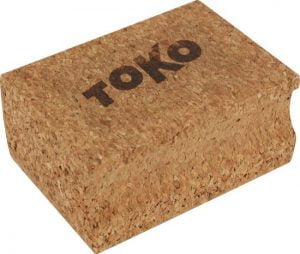
Finally, we have cork. Hardly anyone really understands the purpose, cork may look like normal wax brushes but absolutely does not have the same function. You use cork to apply wax, not to remove it.
You can use cork on the track to apply rub-on-wax, for example, but also to apply Fluorine just before the race starts. In theory, you can also replace your wax iron with cork, provided you only purchase liquid wax, although we do not really recommend that given the limited lifespan of this wax.
Finally
Hopefully, after this extensive article, you have gained some more insights into which Ski & Snowboard wax brushes exist and what you use them for. For recreational users, we at Wax & Board recommend at least the following set:
- Copper brush
- Nylon brush (white)
- Horsehair brush
If you have extra budget, we advise you to purchase a wire brush and only use the 3 brushes in the Post Wax process. On the other hand, if you really don't have a budget, it is best to buy 1 good white nylon brush and clean it at least once a season. maintenance at Wax & Board.
Have fun waxing your Skis or Snowboard yourself! Be sure to visit our shop wax , scrapers or brushes to purchase.


